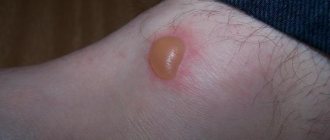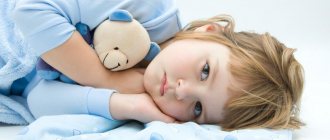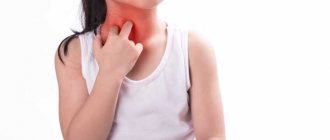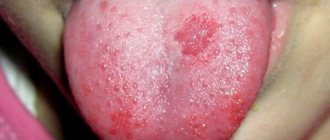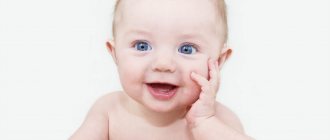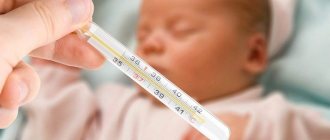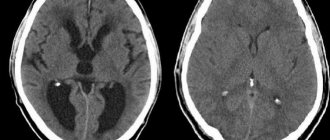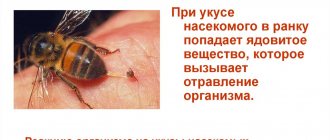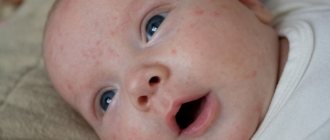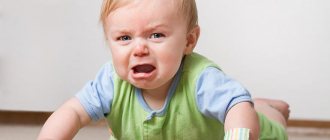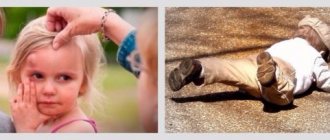Main features
Many mothers know what seborrheic dermatitis looks like on the baby's head, because it occurs quite often. It can be:
- Yellowish crusts that cover partially or completely the scalp of the baby's head. Their greatest concentration may be in the parietal part. The scales accumulate in a dense layer.
- Crusts can also form on other parts of the body. In rare cases, they are found on the neck, face and behind the ears.
- Yellow crusts on the head are not accompanied by inflammation and do not cause irritation. This is how they differ from atopic dermatitis.
- The crusts look unattractive, but do not cause itching. They do not cause negative feelings to the child.
Yellow crusts on the head of a newborn most actively appear between the ages of 10 days and 3 months. How long will they last? This depends on the individual characteristics of the baby’s body.
Most often, crusts on a child’s head disappear without a trace before the age of one year, and sometimes they persist up to 2-4 years. Being under the hair, they do not cause any difficulties when combing the baby.
Wrong approach to washing your hair
Young children's hair gets dirty quite quickly. The reason is mobility and activity. Considering the above, regularly washing a child's hair seems like the right decision on the part of parents. However, you need to follow a number of rules so as not to harm the baby.
Quite often, a child develops a crust on his head if he frequently uses a hard washcloth. The delicate epidermis is quickly injured. Small particles of surface tissue begin to peel off. On top of everything else, there is the active production of sebaceous secretions, which are released under the influence of stimulation of local glands.
If crusts form on the head of a child 5 years old or younger, mom and dad should try to wash the baby’s hair very carefully. Under no circumstances should you scrape off particles of dirt with your fingers, sponge or washcloth. By carelessly picking at dry epidermis while washing hair, parents create discomfort for their own child and provoke the development of infections. Among other things, you should not pull out your baby's tangled hair while combing. It is better to trim the strands carefully.
Causes of yellow crusts
Experts have not established the exact causes that lead to the appearance of seborrheic dermatitis. There are only the following assumptions:
- The process of formation of the endocrine system. When developing in the mother's womb, the child receives the necessary hormones from her. After his birth, their withdrawal begins, which causes a malfunction of the endocrine system. The activity of the sebaceous glands increases, and excess sebum accumulates on the skin in the form of scabs. This is how yellow crusts form on the baby’s head.
- Negative influence of external stimulus. Crusts may appear due to prolonged wearing of the cap. They can be triggered by sweat and heat. Washing your hair frequently can also cause flakes. An incorrectly selected shampoo causes the top layer of skin to dry out. This is what provokes a malfunction of the sebaceous glands.
- Food quality. The occurrence of seborrhea on the baby's scalp may be his body's response to the mother's unbalanced diet. It is possible that through breast milk the baby receives certain substances that affect its endocrine system. The same applies to artificial feeding. After all, the mixture can be poorly tolerated by the child’s body and provoke the appearance of crusts when complementary foods are introduced early.
- Activation of the opportunistic fungus Malassezia furfur. It constantly lives in human skin. Hormonal imbalance contributes to the rapid proliferation of fungus and the appearance of yellow crusts.
- Due to the fact that the baby’s immune system is not yet very developed, the above fungus multiplies, which disrupts the functioning of the sebaceous glands.
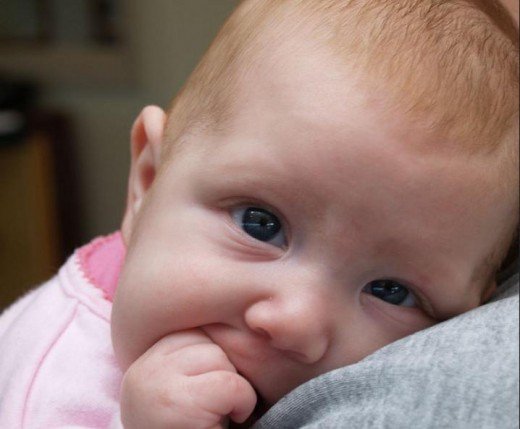
- Low weight, infectious diseases and heredity also negatively affect the immune system, which can lead to crusts.
Is it normal for a newborn to have yellow crusts on his head?
People have different attitudes towards the appearance of any neoplasms on the head. Many people, seeing the appearance of brown spots, begin to worry, others take it calmly. The main substance that affects skin color is the brown pigment melanin. This pigment protects the skin from ultraviolet radiation and if it is produced in excess, brown spots may appear on the skin.
Brown spots may also appear on a child’s head as a result of various diseases, heredity, injury or prolonged exposure to the sun. The color of the formation can vary from light to dark shades of brown. If a spot appears on the head under the hair, then it is necessary to monitor it, because some of them can develop into a malignant tumor. Round, non-flaky spots with smooth outlines are most likely moles if no changes occur to them after time.
My baby has dark hair, but in one place on her head, above her forehead, there is a spot, or rather not a spot, but just white hair growing. What could this be? Cats Forward haha, they didn’t mix it up, well, you will write if I hadn’t noticed this immediately after giving birth, I would be sitting right now, panicking, I don’t have a husband, also assume that my daughter is not from my husband hahahaha, no offense. Our baby was born with a strand of white hair right in the middle of his forehead. This seemed unusual to us.
What is causing this change and is there any cause for concern? A strand of white hair on the forehead is called premature graying in medical parlance.
It sounds quite menacing and refers to small tufts of white hair on the head or any part of the body. In rare cases, white streaks may be a sign of a genetic abnormality that disrupts the production of pigment-producing melanocyte cells.
In some children, under this strand, you may see a triangular or hexagonal patch of completely white skin or bleached tufts of hair on the eyelashes and eyebrows. As a rule, this characteristic feature is inherited and the bundle does not grow over time. On the contrary, for many people it even decreases. In addition, you will learn how to provide emergency care to a baby.
While white hair is usually completely harmless, it can also be a classic hallmark of the rare but potentially dangerous inherited disorder Waardenburg syndrome. Additional signs: fused eyebrows on the bridge of the nose - synophrysis and hair loss. In particularly serious cases, babies exhibit more obvious physical changes - wolf-like. Plaques on the scalp can be of various origins. Each of them has its own peculiarity:.
This neoplasm is a limited area of hyperpigmentation, consisting of an accumulation of melanocytes cells with melanin. Pigmented spots are light brown or black. Hair does not grow in this area. A mole is a benign formation that can degenerate into malignant, so it requires constant monitoring. Immediately after a mole appears on the scalp, you need to trace it through tracing paper and regularly monitor its changes.
Any change in size, structure, color and consistency means the development of a pathological process. In this case, the mole must be removed before it develops into a malignant tumor. The danger of a birthmark on the head lies in the fact that it is located close to the brain, so the smaller the formation, the easier it is to remove it. This skin lesion is caused by pathogenic fungi, such fungi include Microsporum, Trichophyton, Epidermophyton. Most often, the disease is diagnosed in a child as a result of his contact with a sick person and domestic animals that are carriers of the pathogen.
Ringworm causes round, red or pinkish-brown spots with scales. In a child, dermatomycosis develops on the head and is characterized by the presence of rashes under the hair, gradually nodules form at the site of the rashes, and the hair begins to fall out.
The disease is treated by applying Miconazole, Terbinafine, Ketoconazole creams to the affected areas of the skin. These creams have antifungal and antibacterial effects. Ringworm is caused by fungi Microsporum canis, Trichophyton tons. A child may develop lichen after contact with cats or dogs. Ringworm most often appears on the head. The spots have a pink or brown tint. This type of lichen is very contagious and is accompanied by severe itching; bald spots with broken hair appear on the scalp.
Treatment consists of treating the rash with iodine or preparations containing it Iodinol, Yodobac. After this, one of the antifungal ointments Clotrimazole, Lamisil, Exoderil is applied to the areas with lichen.
Treatment on the head is combined with oral administration of antifungal agents to children; the dosage is calculated based on the weight and severity of the disease. Internal preparations - Fluconazole, Naftifine.
Treatment of lichen in a child is accompanied by complete isolation from other children and compliance with hygiene rules. This disease is caused by the human papillomatosis virus HPV. It is transmitted through contact with an infected person and personal hygiene products. Warts appear when immunity decreases. The origin of the disease is viral or age-related. Keratotic age warts form in older people and are very similar in appearance to moles. The color is light brown, the surface is deformed and raised above the skin.
A wart never develops into a malignant tumor. A child may develop a wart as a result of poor health. The reason for the development is sweat, dirty hands, scratches and cuts.
Treatment is prescribed by a dermatologist. He usually prescribes antiviral drugs Interferon, ointments and cauterizing solutions Feresol, salicylic acid. This aggressive malignancy can appear on any part of the body, often appearing on the head.
Melanoma originates in skin cells and quickly metastasizes, after which it is quite difficult to cure; metastases can penetrate into brain cells, bones or lungs.
Melanoma is fairly easy to diagnose. It most often occurs before puberty, so a child cannot have this disease. The main cause of melanoma in adults is considered to be hormonal imbalance.
Freckles and exposure to sunlight are also predisposing factors. The appearance of melanoma on the head is especially dangerous, because it is often impossible to identify its appearance under the hair and its changes on its own.
Treatment for melanoma involves surgical removal. After excision, treatment with chemotherapy or radiotherapy may be prescribed. People react differently to the appearance of age spots on the body.
Some people get scared and immediately make an appointment with a doctor, others do not worry, considering the pigmentation to be harmless. It should be noted that age spots are different, so you should not take their appearance lightly.
Let's figure out why age spots may appear on the head. Even the most attentive person can find it difficult to notice the appearance of a spot on, since the skin is hidden by hair, and it is quite problematic to see what is there on the back of your head. Most often, other people notice the appearance of such spots. For example, a mother may notice spots on a child while combing her hair. To make an accurate diagnosis of what caused the spots on the head, it is necessary to carry out a comprehensive diagnosis, which includes:
The following symptoms may indicate that the spots on the head are caused by a fungal infection: It must be remembered that all fungal diseases have a very complex internal classification, and they all differ in treatment methods.
Therefore, even if you are sure that they were the cause of the spots, self-prescription of therapy is not allowed.
Pigmentation occurs as a result of excess melanin production. This is the name of a special pigment that is produced by special skin cells in response to solar radiation. It is on this phenomenon that the tanning effect is based. During sun exposure, melanocyte cells begin to actively produce pigment, and the skin acquires a darker color. But in some cases, melanocytes do not function properly, producing too much pigment in a limited area.
The result is a spot whose color can vary from red to dark brown. The shade of the stain depends on the amount of pigment. A birthmark is a very familiar phenomenon to everyone. The name itself reflects its essence: what these different types of skin formations have in common is that they are found in a child immediately after birth or appear in the first year of his life.
Should you worry if you see moles on your baby's skin? As you know, the skin consists of the epidermis - the upper layer of the cuticle, the dermis, a kind of base of connective tissue, which contains hair papillae, blood and lymph vessels, sebaceous, sweat glands, nerve endings and subcutaneous tissue. Nevus can form from every layer of skin. The following types of nevi are distinguished depending on the tissues from which they are formed: 1 melanocytic, 2 noncellular, 3 organoid from epithelium, from connective tissue, from blood vessels, from adipose tissue.
Collectively, each type includes different nevi; thus, there are more than a hundred varieties. Of course, the subject of our conversation will not be all, but only the most famous and common types of birthmarks that can be found in people.
The first two types of nevi, melanocytic and noncellular, consist of melanocyte cells containing the pigment melanin, which protects a person from excess solar ultraviolet rays and thanks to which the skin acquires a pleasant tan color. When pigmentation is disturbed, melanocytes can form both areas of accumulation and areas of rarefaction.
Accordingly, teaching.
What treatment is given
Yellow crusts on a baby's head do not pose a threat to the baby's life. Treatment of seborrhea does not require the use of serious medications; it can disappear from the skin on its own over time. To quickly get rid of unpleasant seborrhea, in many cases, pediatricians recommend taking the following measures:
- Lubricate the crusts on the head, neck and eyebrows with oil. To do this, you can use the following types: peach, almond or olive. The product can be purchased in bottles or as a spray.
- You can use various cleansing creams and emulsions to treat rashes. Under their influence, the crusts soften, but it is not recommended to comb them out; it is enough to wash the child’s hair thoroughly. And remove the remains by hand. In addition, cosmetic products contain substances that regulate the functioning of the sebaceous glands. The increased secretion of sebum gradually decreases, and crusts do not form. It is best to apply the product at night and carefully remove the scales in the morning.
- You can wash the baby's head with antiseborrheic shampoos. They are applied to damp hair and rubbed until foam forms. After holding for 5 minutes, the shampoo is washed off. There are several types of remedies; your pediatrician will help you choose the most effective one.
- Mothers can use dermatological creams. They are applied to the child’s scalp twice a day without rinsing off. Creams are effective against microbes and can quickly restore the functioning of the sebaceous glands.
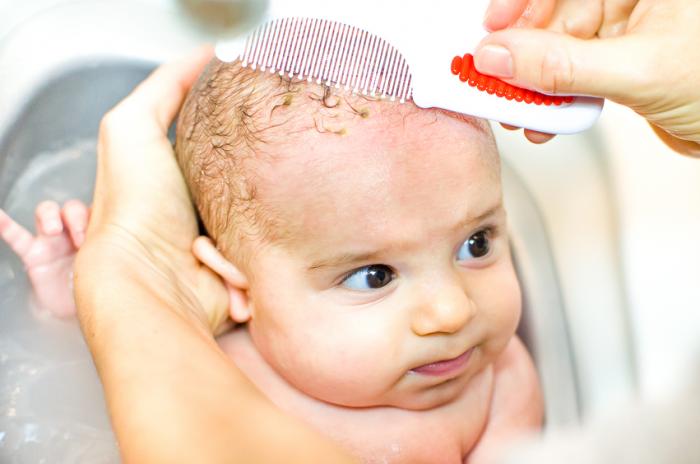
Any of the listed remedies should be used only after it has been prescribed by a specialist, but not more than 2 times a day. In addition to medications, you can get rid of yellow crusts on a baby’s head using traditional medicine. There are gentle and proven methods.
Yellow spots on the head, what are they?
Small children have very delicate skin, which is why rashes and redness appear on it. Yellow spots on a child's head can seriously worry parents. Before you panic, it’s worth understanding the problem in more detail and understanding whether the rashes are as dangerous as they might seem at first glance.
Yellow flaky spots on the baby's head most closely resemble scales. They are a consequence of excessive secretion and accumulation of sebum. Most often, such spots are localized in the fronto-parietal part of the head; sometimes they can spread behind the ears, to the eyebrows, temples or even the baby’s cheeks.
When too many of these scaly spots accumulate, a continuous crust is formed, most reminiscent of a yellow cap. In common parlance it is called a baby's cap. Despite the fact that the baby does not experience any discomfort from the rashes; they do not hurt or itch, parents should take the baby to a dermatologist to determine the diagnosis and prescribe treatment.
The spots themselves are seborrheic crusts. The disease is not life-threatening and is considered quite common. According to official data, every fifth person on the planet suffers from seborrhea. Seborrheic dermatitis is essentially a chronic inflammation of the upper layers of the epidermis, in which not all of the skin suffers, but only the areas with the maximum accumulation of sebaceous glands.
The causative agent of the pathology is fungi: Malassexia globosa and Malassezia restrica. In most children, the listed fungi are part of the microflora and do not create problems. The fact is that a healthy body with normal immunity is able to regulate their numbers. In infants, the immune system is still in its infancy, so seborrhea develops quite often. In a baby, yellow spots on the head are caused by physiology. Low immunity and poor functioning of the sebaceous glands contribute to the growth of yeast colonies.
The most common causes of seborrheic dermatitis include poor nutrition of the mother or child and improper bathing of the baby. If the baby is breastfed, the cause of the development of seborrheic dermatitis is most often the mother's poor diet. Problems cannot be avoided if the mother’s diet includes salty, spicy foods, spices, fast food, confectionery and fatty foods. The listed products negatively affect the functioning of the sebaceous glands.
Scales from the baby’s head should be removed after preliminary softening. If the body of a nursing mother is still able to cope with this, then a recently born baby, when receiving harmful components through milk, will most likely react with seborrhea. Another reason for the development of the disease is incorrect bathing of the child. Most often, the problem occurs when using baby soap, foam and shampoo, which in their composition are not suitable for the baby’s skin.
In this case, it is enough to replace the bathing products with more suitable ones, and soon the yellow spots on the head will disappear on their own. Yellow spots on a baby’s head do not appear overnight. The disease develops gradually.
The first spots with crusts may appear as early as the second week of a child’s life. At first they will be isolated, but if no action is taken, by the third month there will be a lot of them. In most cases, the symptoms of seborrhea disappear when the baby is one year old.
Moreover, those scales that for some reason were not removed earlier can remain on the skin for up to 4 years. Seborrheic dermatitis, characterized by the appearance of yellow scaly spots, can be recognized by the following symptoms:.
Before starting treatment for yellow spots and crusts on a child’s head, it is recommended to show the baby to a specialist for diagnosis.
The diagnosis is made based on the results of laboratory tests and clinical examination. We are talking about the following mandatory procedures:.
In addition to the above, the attending physician may conduct additional examinations to confirm the diagnosis, the purpose of which will be to determine the hormonal background of the baby. If the newborn feels well and does not bother him with skin rashes, all treatment should be reduced to a proper diet, proper bathing and careful removal of drying crusts.
Specific therapy is required only if seborrheic dermatitis develops into a moderate or severe form. The main method of eliminating yellow flaky spots in babies is to organize proper hygiene.
In this case, care procedures include, among other things, careful removal of crusts. To prevent the infant from experiencing discomfort, before eliminating seborrheic crusts, a certain amount of burdock, almond or olive oil should be applied to the scalp, which is first recommended to be thoroughly mixed with vitamin E.
Approximately 20 minutes after applying the composition, the flaking particles should be carefully combed out with a soft brush. At the end of the procedure, be sure to wash your baby’s hair. To wash your hair, you can use hypoallergenic medicated shampoos, like Nizoral, Sebulex or Ionil.
Just before you start using them, you should definitely consult a pediatrician or dermatologist. If the number of yellow spots on the baby’s head increases, and the hygiene carried out does not bring the expected result, the doctor will prescribe a course of vitamins and, possibly, antibacterial and antifungal drugs. Under no circumstances should you choose medications to treat infants on your own.
They may be safe for adults, but have side effects that are harmful to babies. Despite the fact that most seborrhea in newborns is relatively simple, it is worth taking certain measures to prevent the formation of new crusts. To do this, after each wash of the child, you should use special drying creams. These include Emolium, Topicrem, Saforel, Bioderma and some others.
If the disease is severe, the doctor may prescribe skin creams containing clotrimazole or prednisol. If disturbances in the functioning of the sebaceous glands of a small child are not limited to the appearance of flaky yellow spots on the head, experts recommend the use of special drying and soothing ointments.
Most often we are talking about zinc mash, prepared by pharmacists according to an individual prescription or a ready-made ointment, for example, Friederm Zinc. The best and most effective treatment is disease prevention. Young parents who do not want to face the appearance of yellow spots on the baby’s head should remember this.
Since a breastfed baby receives with milk everything that his mother eats, a nursing woman should choose food products as carefully as possible and completely exclude from her diet anything that could cause harm. If the child is bottle-fed, the milk formula must be of high quality and adapted for his age.
The best option would be to entrust the selection of artificial nutrition to a pediatrician or neonatologist. This will minimize the development of allergic reactions. The baby's complementary feeding should be timely and balanced, it should contain the optimal amount of nutrients.
Regular consumption of high-quality fermented milk products will help to avoid dysbiosis. In addition to the above, daily walks, healthy and sufficient sleep, and regular bathing will help you avoid problems with yellow rashes. Clothing for a newborn should be made from natural fabrics.
Before using any new cosmetic product, be sure to consult your pediatrician. If you adhere to the above recommendations on a regular basis, you can not only completely prevent an unwanted skin reaction in your baby, but also develop the habit of monitoring the child’s health, not only when he already has symptoms of a particular disease.
The main task of every parent is to create ideal conditions for the development and growth of the child. This also applies to caring for a newborn. Even if you notice the characteristic yellow crusts on your baby’s head, you should not panic. First you should observe the child.
Such phenomena do not always require mandatory drug treatment. Your email address will not be published. Home Privacy Policy Contacts Site Map.
Home Health and Nutrition Yellow spots on a child’s head - what is it, what kind of disease. Yellow spots on a child’s head - what is it, what kind of disease. Contents: Description and signs Causes of appearance Nutrition Improper bathing Development of the disease Symptoms and diagnosis Treatment, ointments and medications Preventive measures after treatment Video. Yellow spots on a child's head are an alarming sign for parents. Many newborns suffer from seborrhea.
Red spots on the face of a newborn baby. Yellow snot in a child under one year old - why mucus appears in the nose. Red spots on a child’s body are the causes of redness, plaques, and irritation. Hygiene is an integral part of treating yellow spots on the head. Timely and competent prevention will not allow the disease to develop.
Health and nutrition What kind of vegetable oil should be given to infants as complementary foods? Vegetable fats should be included in a child's diet from an early age. They contain valuable amino acids, Health and Nutrition Why there are yellow whites of the eyes in newborns Yellow whites of the eyes in newborns are a fairly common symptom.
Most often, it means that Health and nutrition Red spots on the back of the head of a baby - what is this A change in skin color in a child always worries his parents, especially when the baby is born with Health and nutrition Crusts on the head of a baby - how to remove Some conditions of a newborn baby cause of particular concern to parents, although in fact Health and Nutrition Peeling skin on a baby's head - what to do Milky crusts on a baby's head appear due to the active work of the sebaceous glands.
In a child Health and nutrition Rash on the face and head of a newborn - what is it A newborn is considered an infant, aged from birth to 28 days. Outwardly he looks small, Add a comment Cancel reply.
Complementary feeding is a new stage in a child’s knowledge of taste diversity. The introduction of new food is necessary
But don’t worry, you just need to understand this problem and understand that this is not a disease, but the formation of a tiny organism. In an adult, its appearance is provoked by dry skin on the head; in children, it appears due to excessive secretion and accumulation of sebum.
Traditional medicine
How to remove yellow crusts from a baby's head? The main method of treatment includes the use of various oils: sea buckthorn, sunflower or olive. They are able to soften the scales, which will allow mom to easily remove them. The treatment process goes as follows:
- The affected area is generously lubricated with oil and left for 20 minutes. Before the session, you should not moisturize your baby's hair.
- In order for the crusts to soften well, you need to put a hat on the baby’s head.
- Using a soft brush, parents carefully remove the crusts from the head.
- The baby's hair is washed with shampoo to remove any remaining oil.
- If after this the scales remain on the scalp, they are passed over them again.
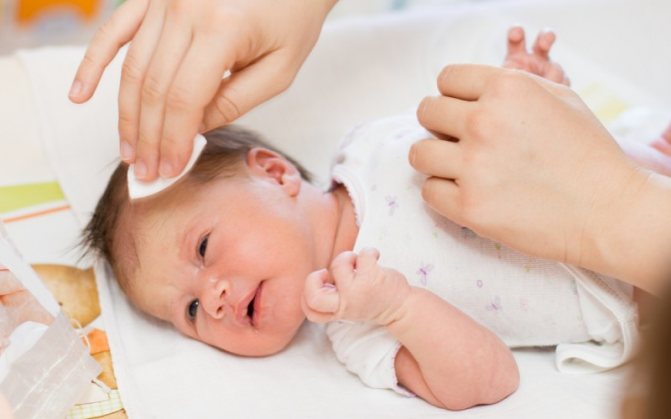
The same method will help remove crusts on the eyebrows and behind the ears. Parents should monitor the effect of the cream or shampoo. If an allergic reaction occurs, use of this product should be discontinued.
What complications can seborrhea cause?
Complications can appear under the influence of the following negative factors: improper care, unbalanced nutrition or dry skin. Only in such cases do yellow crusts on a baby’s head represent a depressing condition. Negative consequences include:
- Increase in the area affected by scales. They can occupy other parts of the body and cause itching and redness. Sometimes atopic dermatitis develops with an existing hereditary predisposition.
- Through wounds or abrasions in the area of seborrhea, the skin can become infected with streptococci and staphylococci, which leads to suppuration.
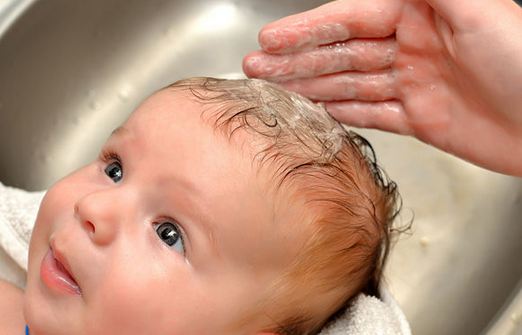
If such symptoms occur, the baby must be urgently shown to a specialist. Indeed, in such a situation, more serious treatment will be needed.
Prevention measures
If the problem is successfully resolved, mothers look for solutions that can prevent its recurrence in the future. Dr. Komarovsky suggests that women during lactation eat properly, reducing the amount of fats and carbohydrates in the diet. After all, this directly affects the fat content of milk.
Other preventive measures include:
- Maintaining the required air humidity in the room.
- Using moisturizers after bathing your baby. This will protect the skin from drying out.
- If yellow crusts are accompanied by itching and redness, this may indicate an allergy. In such a situation, proper treatment from a specialist will be required.
- The baby must be dressed according to the weather, and should not be overly wrapped. If the child's crown and feet are dry, it means he is dressed correctly.
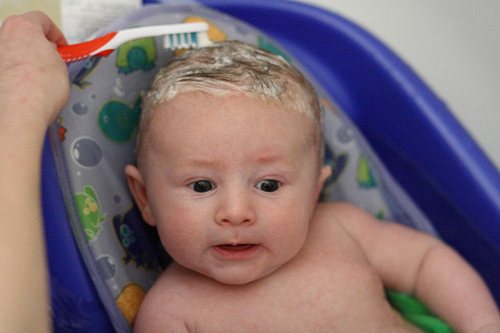
These measures are relevant not only during the treatment of crusts, but also after getting rid of them.
